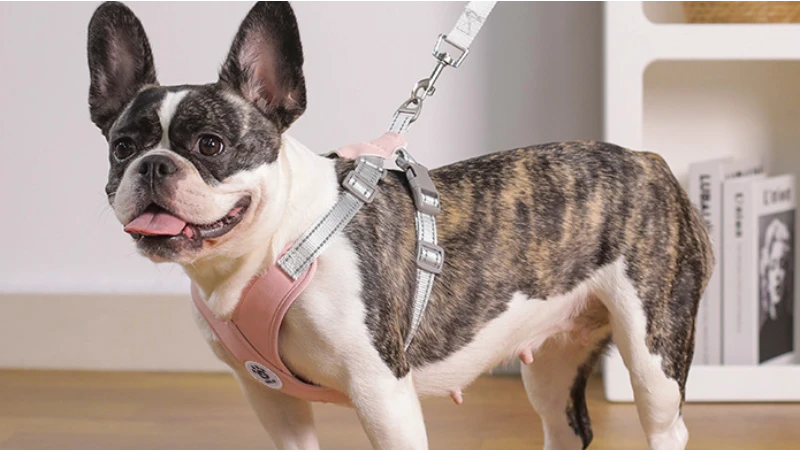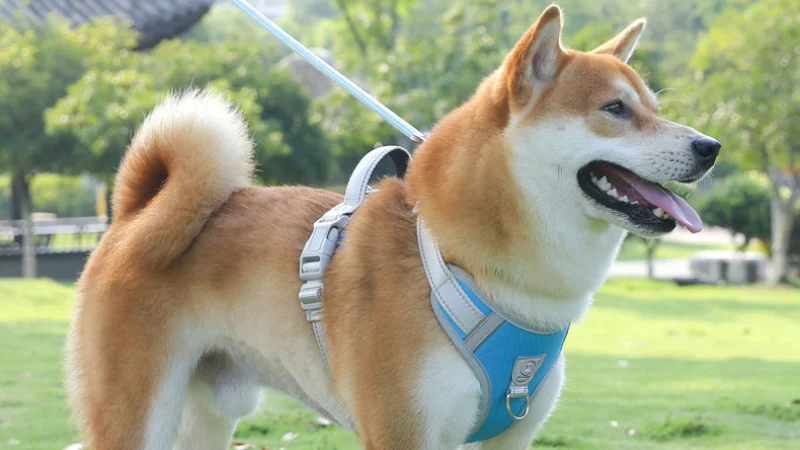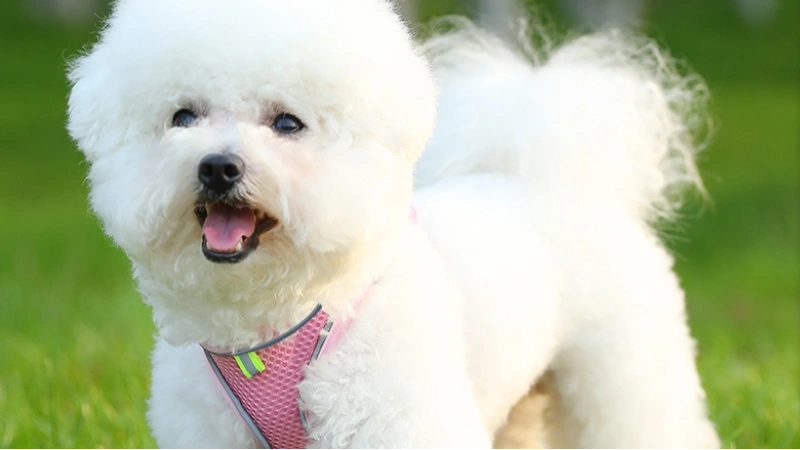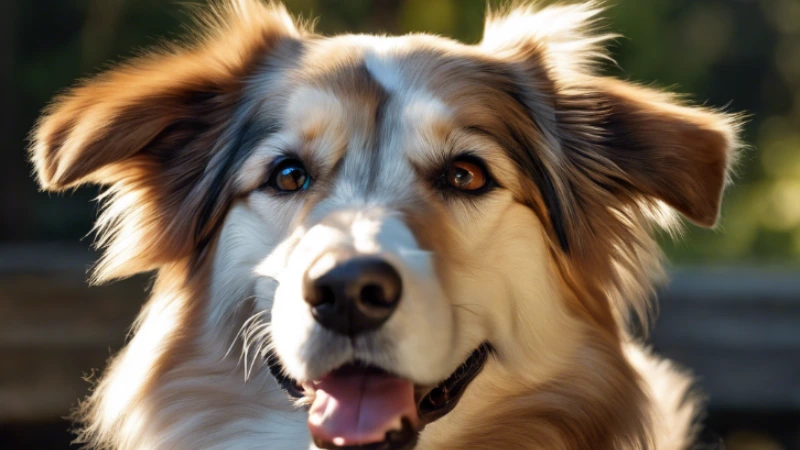Training your dog to wear a harness is an essential skill that can significantly improve your daily walks and outdoor adventures. This comprehensive guide will walk you through the process step-by-step, addressing common concerns and providing practical solutions to ensure a positive experience for both you and your furry friend.
Why Use a Harness?
Before diving into the training process, it’s important to understand the benefits of using a harness:
- Safety: Harnesses distribute pressure evenly across the chest and shoulders, reducing the risk of neck injuries that can occur with traditional collars, especially when dogs pull.
- Control: They provide better control over your dog, particularly useful for larger breeds or those prone to pulling.
- Comfort: Many dogs find harnesses more comfortable than collars, especially during longer walks or for breeds with respiratory issues.
- Versatility: Harnesses can be used for various activities, including hiking, running, and car travel.
Choosing the Right Harness
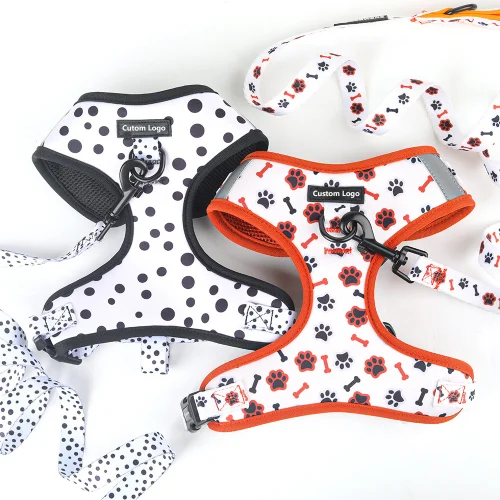
Selecting an appropriate harness is crucial for successful training and long-term use:
- Fit: Measure your dog’s chest and neck to ensure a proper fit. You should be able to fit two fingers comfortably between the harness and your dog’s body.
- Type: Choose between over-the-head and step-in harnesses based on your dog’s comfort level and your ease of use.
- Material: Opt for durable, breathable materials that won’t chafe your dog’s skin. Padded harnesses can provide extra comfort for active dogs.
- Purpose: Consider your primary use for the harness (e.g., daily walks, car safety, no-pull training) when selecting features.
Step-by-Step Training Process
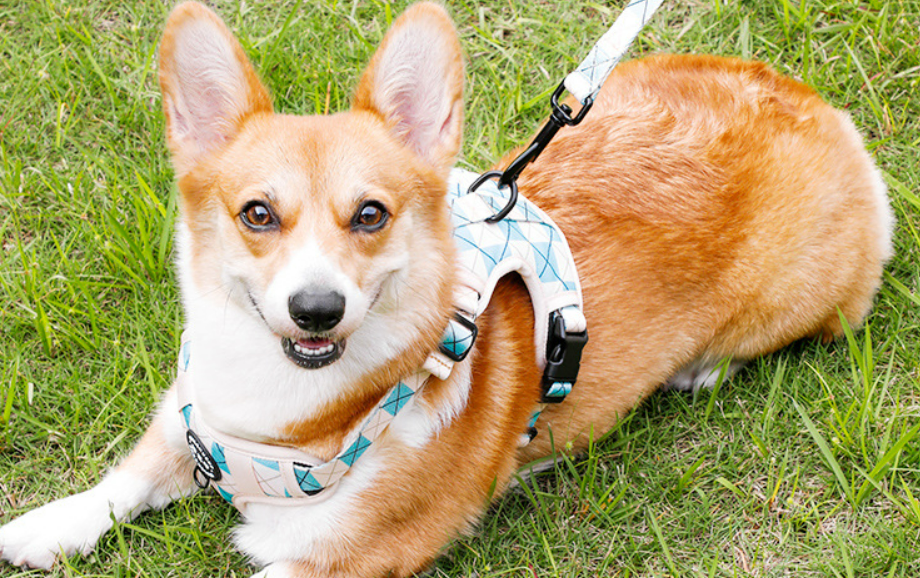
Introduction and Positive Association
- Place the harness on the floor in a familiar, comfortable area for your dog.
- Allow your dog to investigate the harness freely without any pressure to interact with it.
- Sprinkle high-value treats around and on the harness to create positive associations.
- Repeat this process several times over a few days until your dog shows enthusiasm when seeing the harness.
Familiarization
- Hold the harness near your dog without attempting to put it on.
- Reward your dog with treats and praise for calm behavior and any voluntary interaction with the harness.
- Gradually move the harness closer to your dog, always rewarding positive reactions.
- Practice this step for several short sessions (3-5 minutes each) until your dog shows clear comfort and interest in the harness.
Touching and Handling
- Begin gently touching your dog with the harness, rewarding them for staying calm.
- Slowly increase the duration of touch, always watching for signs of stress or discomfort.
- If your dog shows any anxiety, return to the previous step and progress more slowly.
Putting on the Harness
For over-the-head harnesses:
- Hold the harness in front of your dog.
- Use treats to lure your dog’s head through the opening.
- Reward immediately once their head is through.
- Gently fasten the clips while providing treats or distractions (e.g., a lick mat with peanut butter).
- Remove the harness after a short period and reward generously.
For step-in harnesses:
- Place the harness on the ground.
- Use treats to encourage your dog to step into the leg holes.
- Slowly lift the harness while rewarding your dog.
- Secure the harness and offer more treats.
- As with the over-the-head harness, remove after a short time and reward.
Wearing the Harness
- Start with very short periods of wear (30 seconds to 1 minute), gradually increasing duration over multiple sessions.
- Engage in fun activities while your dog is wearing the harness to reinforce positive associations.
- Use treats, toys, and praise to keep your dog’s attention on enjoyable experiences rather than the harness itself.
- Always supervise your dog when they’re wearing the harness to ensure safety and comfort.
Movement and Walking
- Encourage your dog to move around while wearing the harness indoors.
- Use treats or toys to motivate movement if your dog seems hesitant.
- Practice short walks around the house or in a fenced yard, rewarding your dog frequently for calm movement.
- Gradually increase the duration and distance of walks as your dog becomes more comfortable.
Troubleshooting Common Issues
Fear or Anxiety
- If your dog shows signs of stress (e.g., backing away, tucked tail, whale eye), slow down the training process.
- Return to an earlier step where your dog was comfortable and progress more slowly.
- Consider using even higher-value treats or incorporating play to increase positive associations.
Resistance to Putting on the Harness
- Break down the process into smaller steps, rewarding each one.
- Use a favorite toy or game as a distraction while putting on the harness.
- Practice the motions of putting on the harness without actually doing so, rewarding your dog for staying calm during these “mock” fittings.
Discomfort While Wearing
- Double-check the fit and adjust if necessary.
- Ensure there are no areas of chafing or rubbing, particularly under the armpits or around the neck.
- Consider trying a different style of harness if discomfort persists.
Freezing or Refusing to Move
- Use enticing treats or toys to encourage movement.
- Start with very short distances (even just a step or two) and gradually increase.
- Practice in a familiar, low-stress environment before moving to more challenging locations.
Chewing or Pawing at the Harness
- Redirect your dog’s attention with toys or training exercises.
- Ensure the harness fits properly and isn’t causing discomfort.
- Gradually increase wear time to help your dog acclimate.
Tips for Success

- Patience: Every dog learns at their own pace. Remain calm and positive throughout the process, even if progress seems slow.
- Consistency: Practice regularly, but keep sessions short (5-10 minutes) to maintain engagement and prevent frustration.
- Positive Reinforcement: Always use rewards and praise to encourage desired behavior. Never force your dog into the harness or punish them for showing discomfort.
- Gradual Progress: Increase difficulty slowly, ensuring your dog is comfortable at each stage before moving on. It’s better to take small steps forward than to rush and create negative associations.
- Timing: Choose training times when your dog is calm and receptive, such as after a meal or play session.
- Environment: Start training in a quiet, familiar environment to minimize distractions and stress.
- Variety: Once your dog is comfortable with the harness, practice putting it on in different locations to generalize the skill.
- Maintenance: Even after your dog is fully trained, occasionally reward them for wearing the harness to maintain positive associations.
FAQ
1. Why Should I Use a Harness Instead of a Collar?
Harnesses are generally safer for dogs because they distribute pressure more evenly across the dog’s body, reducing the risk of neck injuries that can occur with collars, especially during sudden pulls. They are particularly beneficial for puppies and dogs that tend to pull on the leash, as they allow for better control without causing harm.
2. What If My Dog Is Afraid of the Harness?
If your dog shows fear or anxiety around the harness, start by creating positive associations. Allow them to sniff and explore the harness at their own pace while offering treats. Gradually introduce the harness by rewarding them for any interaction with it, moving slowly through each step until they feel comfortable wearing it.
3. How Can I Help My Dog Get Used to Wearing the Harness?
Begin by letting your dog sniff the harness and rewarding them with treats. Once they are comfortable with it, try putting it on them for short periods while providing positive reinforcement. Gradually increase the duration they wear it, ensuring that you monitor their body language for signs of discomfort.
4. What Should I Do If My Dog Runs Away When They See the Harness?
If your dog runs away from the harness, this indicates fear or anxiety. Go back to square one by associating the harness with high-value treats and positive experiences. Take your time and only move forward when your dog appears relaxed and curious about the harness.
5. How Can I Address My Dog’s Anxiety About the Sound of Buckles?
For dogs that are noise-averse, practice counterconditioning by snapping the buckles at a distance while offering treats. Gradually bring the sound closer as your dog becomes more comfortable with it. Be patient; this process may take time.
6. How Long Will It Take for My Dog to Get Used to Wearing a Harness?
The time it takes varies by individual dog; some may adapt in a few days while others might need weeks of gradual training. Consistency, patience, and positive reinforcement are key factors in helping your dog become comfortable with their harness.
Conclusion:
By following these steps and maintaining a patient, positive approach, most dogs can learn to wear a harness comfortably. Remember that the goal is to create a positive experience for your dog, making harness wear a natural and enjoyable part of their routine. With time and consistent training, your dog will associate the harness with fun activities and adventures, making your outings together more enjoyable and safe.

